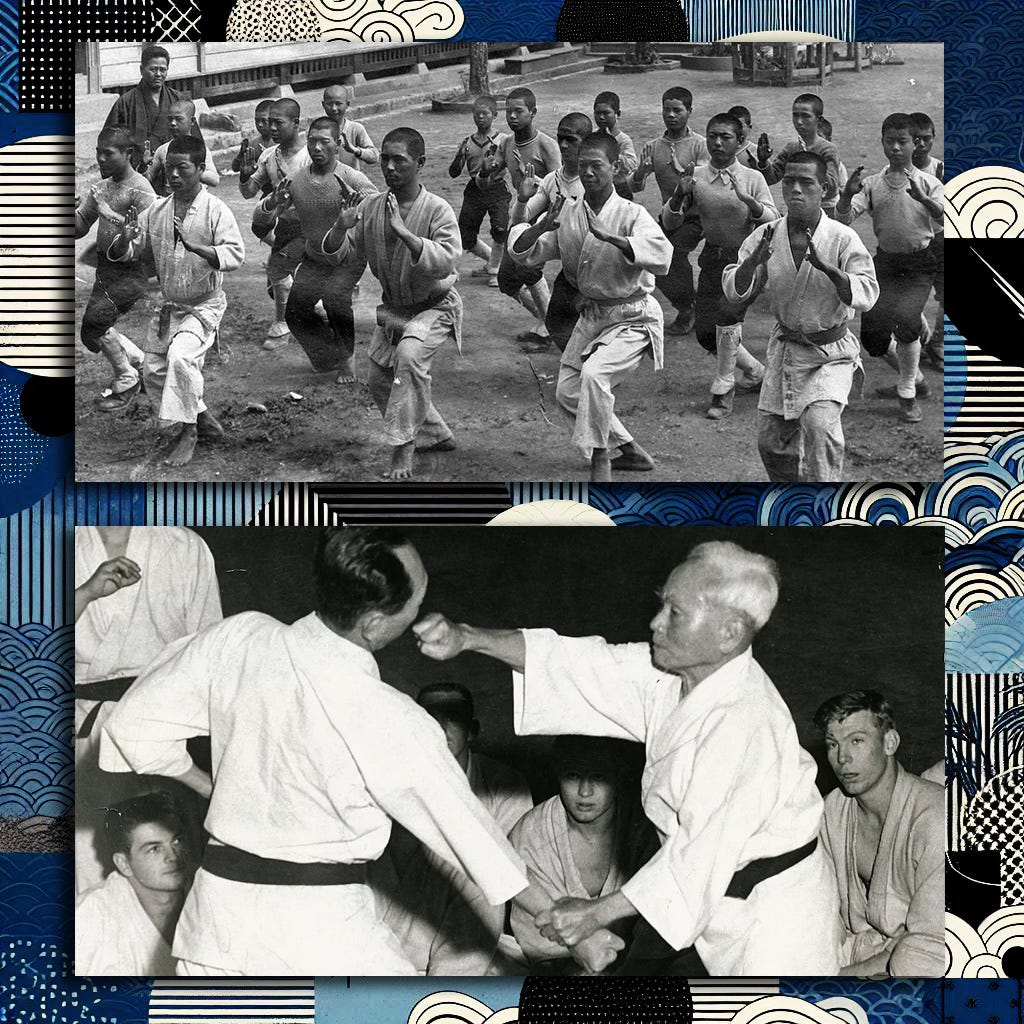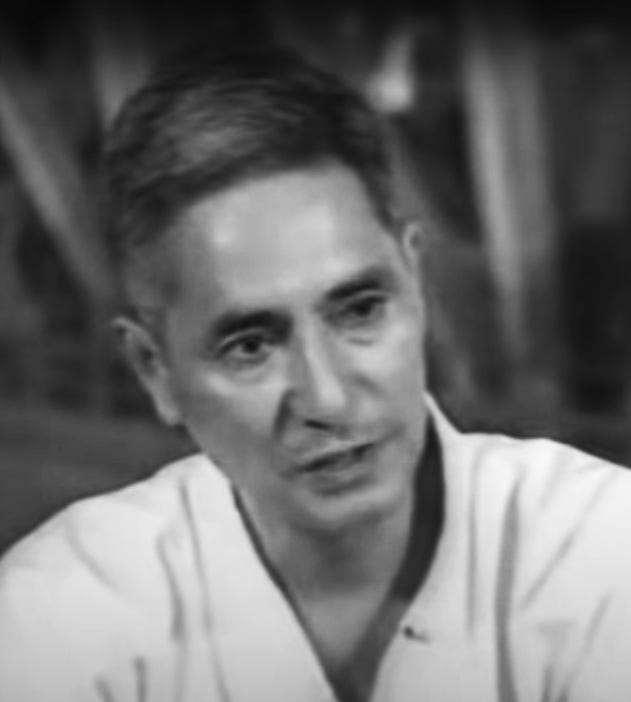Another way of looking at Okinawan karate. Part 1.
Musings on Okinawan ‘Te’ and Japanese karate.
In this first piece:
· Asking questions of Otsuka Sensei.
· The ‘Japanese’ identity of karate.
· The difficulties of researching Okinawan martial arts history.
· Okinawan karate and Japanese karate, what’s the difference?
· The samurai influence in Okinawan karate – or not?
· Indigenous martial arts in Okinawa?
· Were Okinawan fighting arts used in a military context?
· Okinawan karate as a civilian defence method.
To the reader: Bear in mind that these are speculations and are in no way intended to be scholarly or particularly in-depth. Lots of this is just opinion, but let me bring my thoughts into some kind of context by describing some of my main source material.
Magazine sources and other publications (pre-Internet).
As far back as the 1980’s editions of Fighting Arts magazine (published in the UK) featured chunky articles on Okinawan karate history. These caught my attention because I was eager to identify and explore some kind of root to the style of karate I had been dedicating myself to; namely, Wado karate. Later on, I was able to access specialist magazines from the USA like Dragon Times, and some books started to appear that weren’t picture book ‘how to do it’ publications.
Changing opinions.
Over time, I eventually came to the conclusion that the assumptions I had made about Okinawan karate’s relationship with Wado had been somewhat overblown. It appeared that there was no ‘Holy Grail’, no ‘missing link’ and no ‘overlooked revelation’.
The evidence (such as is available) points to something much less earthshattering, more tenuous and ill-defined.
A conversation with Otsuka Sensei.
Otsuka Hironori II Sensei.
Initially, in those early days, I felt so confident in the Okinawan connection to Wado that, when I actually had the chance to do so, I asked the second grandmaster of Wado karate, Otsuka Hironori II Sensei, a direct question. I was sat opposite him in a restaurant in Bristol in 1989 and he was doing a kind of impromptu Q&A through an interpreter. I said:
“Sensei, what proportion of Wado is Okinawan karate?”
I was expecting an answer like maybe, ‘50%, or 30%’, but instead, he said, “If Wado Ryu was a stew, Okinawan karate would be a pinch of salt”. He mimed the action of the sprinkling of salt over a pot.
This was not what I was expecting.
(Isn’t it strange that, with hindsight, of all the questions I could have asked, I came up with that one? But I don’t think it was a dumb question, just a naïve one).
Ideas and interpretation.
Thinking about it afterwards I realised that there were a number of ways I could interpret his answer.
The first one was to take it very literally and to reassess the whole body of what comprises Wado karate as proportionately bigger than just the older names of the Okinawan solo kata that the original grandmaster chose to maintain out of respect for their Okinawan origins (an opinion that the third grandmaster very much endorsed in his recent book).
Looked at in that light, the quote also diminishes the influences and input contributed by the original grandmaster’s Okinawan mentors; Funakoshi, Mabuni and Motobu. That slightly puzzled me. (More on Motobu Choki later).
Or secondly, it could be understood as a covert political statement? But, why should I say ‘covert’? Because, as I have speculated in pervious posts, there is no such thing as people acting non-politically; every decision we make, and almost everything that comes out of our mouth (outside of the mundane and purely functional levels of conversations) is political.
Perhaps Otsuka Sensei was elevating Wado’s distinctive ‘Unique Selling Point’ as a Japanese Budo system, and creating distance from the Okinawan influence? (Nationalistic kudos perhaps?).
Note:
As an illustration of what I said; the Japanese have a way of taking an idea from another source and re-engineering it. A good example would be the design influences for the groundbreaking Japanese Canon camera, which was actually the European Zeiss and Leica technologies. So, the question is; when did the Canon stop being a Zeiss/Leica knock-off and become a distinctly Japanese product? Could this idea be extended to Okinawan/Japanese martial arts?
To read on, become a paid subscriber.






